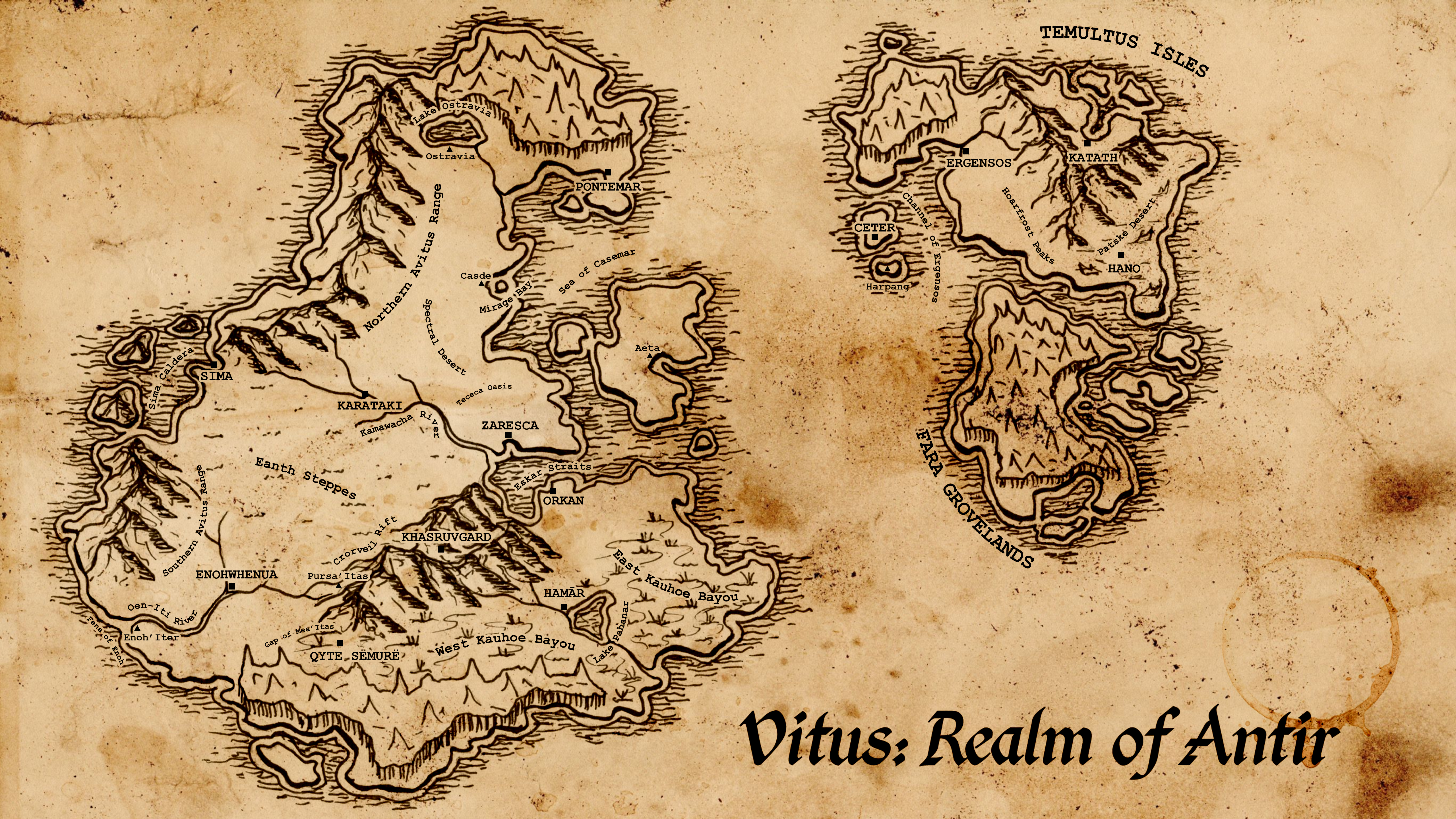The Universe
The timeline is split into two sections; BA and PA (Before Awakening and Post Awakening respectively). (Note; the Enoh use a separate timeline, in which PA is split into a further two sections due to the events of “The Purification”)
BA lasted for 1302 Eptan years, and PA has currently lasted for 2360. An Eptan year is approximately four Earth years. This would lead one to assume the seasons last four times as long on Eptan, however because of the planet’s orbit around its binary-star system being slightly oval-shaped, rather than a true circle, it causes a shorter autumn and spring, and a longer summer and winter. Most of the races in Antir have a 36 month system for a year; three months for both autumn and spring, and another six months each for summer and winter, but because of the oval shaped orbit, each season happens twice in a single Eptan year. Due to the orbit, the summers are blisteringly hot, especially during mid-summer, and the winters can become deathly cold, as this is when the planet is furthest away from the two stars. This is unlike Earth where seasons are dictated by the tilt of the axis, rather than actual distance from the star.
The names for the twin stars are also dependant on the race and culture in question, but in ‘true’ Antirian, they are called Cenno and Henno. Both are light blue stars, but because of the atmospheric makeup of the planet, they appear more white than blue. There is only one moon for Eptan, named Tenno, roughly twice the size of Earth’s moon. Tenno is more reflective of the light received from Cenno and Henno, causing a more vibrant moonlight during the darker hours upon Eptan.
The days here are similar to Earth, consisting of 24 hours, with a similar day-night cycle. However there is no concept of weeks, instead the inhabitants of Antir simply refer to the days of the month as eidai (One-Day), tedai (Two-Day) and so forth. (Note; some cultures prefer ‘dæ’ or ‘dae’ as opposed to dai). Each month consists of 40 days.



Comments